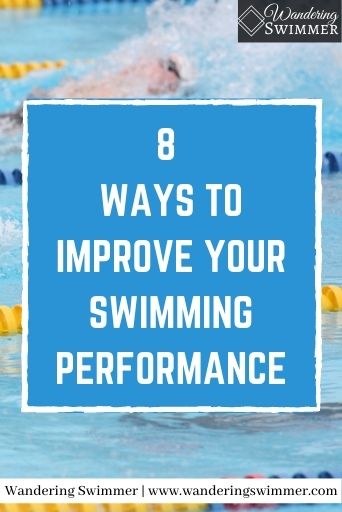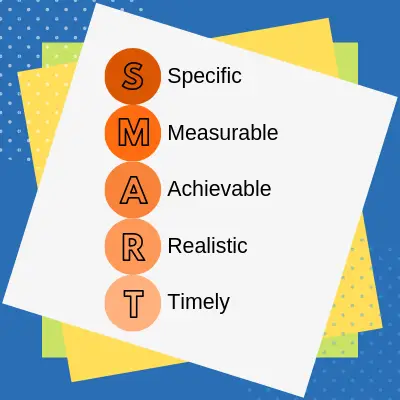8 Ways to Improve Your Swimming Performance
Swimming is a crazy sport.
You train hard for months on end, only to drop a fraction of a second at the end of your season. Or sometimes, you don’t even drop at all.
In cases like this, it might not be the training hold you back.
Rather, it might be you! Simple corrections to your technique and life though can improve your swimming performance.
Disclosure: This post may contain affiliate links, meaning we earn a small commission at no cost to you if you purchase something through one of our links. As an Amazon Associate, we earn from qualifying purchases. Please check out our disclosure page for more information.
Here are eight ways to improve your swimming performance

1. Stop breathing first stroke off the block
Can we be brutally honest?
You don’t need to breathe on the first stroke of your race. Doing so wastes the fastest and most powerful breakout of your whole race. And taking a breath on the first stroke only slows you down.
All that to say, if you want to improve your swimming performance, stop breathing the first stroke off the block!
Start making this a habit by enforcing the action in practice.
When you push off the wall for your sets, focus on your breakout instead of getting air. It is going to hurt and feel uncomfortable the first several times?
Heck yes!
But you build into it. As you go, you’ll ease in the new habit and increase your lung endurance.
Don’t get lazy when you’re tired or when it’s an easy set. That’s the best way to slip back into bad habits.
2. Limit or stop breathing on breakouts
One way to improve your swimming technique is improving your breakouts. Not just when you come off the start or the first wall. But every turn.
Yes, more breath control.
And I get it. Air is important to everyone.
But take a moment to compare the breakouts of a swimmer who breathes on their breakout. Now watch a swimmer that doesn’t. You should see a stronger surge pull on their first stroke. And, you should see a faster breakout.
More Content for You: How to Get Through Moring Swim Practice (coming soon)
Mostly, because they’re not pausing to get that breath in.
Much like everything, the best place to make this a habit is in practice. And we won’t lie, it’s rough.
Your lungs burn and you’ll feel that urge to breathe more than ever. Ignore it. Take the next stroke though and breathe then. Again, you need to build into this. It’s an incredibly hard habit to break but the rewards are worth it.
3. Incorporate an underwater kick
Want to get better at swimming? Work on your underwater kick.
Every wall, you should ensure that you have a good, strong underwater kick. At least enough to get you past the flags.
You’re at your fastest in swimming at:
- The start of your race off the block
- During the underwater part coming off the walls
If you need any proof of this, just look at the underwater views of Olympic swimmers. When they push off the wall, they’re working their underwater kick.
Incorporating an underwater kick is an easy way to improve your swimming performance. And increase your speed in swimming.
Correcting these issues during stroke work is easy. Putting speed to it though adds a layer of new difficulty. Because it’s so easy to fall back into old habits when your lungs and muscles burn.
Strap on some fins to help add speed and get into the familiar motion of underwater kicking. This will help you get into the habit of kicking off the walls.
The best fins to help you train won’t be the long, lightweight kind. Instead, look at fins such as Speedo Switchblade fins, Arena Powerfin Pro, or FINIS Zoomers
It’ll be hard, but stick with it! The dropped time will make the reward that much sweeter 🙂
4. Tight Streamline
A tight streamline and underwater kicks go hand in hand.
You can kick as fast and long underwater as you want. But if you’re catching drag on your streamline, then it’s not as effective as it could be.
More Content for You: 9 Tips to Survive Holiday Training
Make sure you keep your biceps tight around your head. If you can’t feel your arms pressing against your ears, you’ve got some drag! It could also be that you’re burying your head while in the streamline position.
It’s hard to tell if you have a tight streamline, aside from trying to feel it out. Have your coach spot-check you and give you feedback. Or ask a teammate to watch you underwater!
5. Working your drill and stroke sets
You know those drill and stroke sets that your coach gives you the start of each season? Or during practice or taper? Be honest with yourself, how often do you zone out during them?
Guilty.
More Content for You: Swimming Secrets: What Really Happens at Swim Practice?
It happens to us all though! By afternoon practice, we’re already thinking about what’s for dinner. We’re only human. So don’t go beating yourself up over it.
Instead, start using drill sets to better your swimming technique.
Because working your drills is a great and easy way to improve your swimming performance. It makes you focus on your stroke so that you can feel or see what you’re doing wrong.
This also means that you’re not sprinting these sets.
Drill sets are supposed to be slow. They force you to think about your stroke and what you’re supposed to do. When you sprint these just to finish them, you’re only enforcing the bad habits.
6. Taking care of your health
We know this suggestion isn’t pool related. But what you do out of the pool is just as important as what you do in the pool.
Not convinced?
Think of it this way. We all have suffered through swimmer’s ear. At best, you can expect to be out of the water for at least 2-3 days, depending on how severe it is.
Related articles:
While 2-3 days may not seem like a lot, it adds up quickly if you find yourself out with swimmer’s ear a few times each season. All of which could’ve been avoided if you used ear drops after each practice or earplugs during practice.
Obviously, they don’t prevent swimmer’s ear, but it does lessen the chance of you getting it.
In the same vein, other preventative measures can also lessen the time away from water. The good news is that it requires little effort on your side and isn’t expensive to put into practice. Such as:
- Limiting your exposure to those around you with an illness
- Not sharing water bottles
- Getting your flu shot

Stretching
Stretching is another easy, but often overlooked value to improving your swimming performance.
It helps prevent injuries by warming up your muscles and joints. And serves an additional purpose of increasing your flexibility.
Related article: Things You Should be Doing Before Practice (But Aren’t) (coming soon)
At best, you should look at ten to twenty minutes of stretching before practice. Especially a morning workout when you’re fresh from bed 🙂
While simple, stretching can help avoid expensive surgeries or constant pain later in life. Twenty minutes of your time each day can help prevent a two month recovery due to surgery.
7. Better eating habits
This one gets us all. And it seems like it’s not important to improving your swimming performance, but a bad diet can affect your swimming.
Yes, one of the great things about swimming is that you can eat a lot. And that you can eat whatever you want. Some of that is only partially true, because moderation is still important.
Related article: 10 Myths About Swimming
Just because you can do it, doesn’t mean you should 😉
Ensure you’re eating a more balanced meal. That means cutting out most of the heavier sugars, such as cookies, cakes, and sweets.
Make sure that you’re getting enough protein to assist with post recovery workout. Additionally, check that you’re eating enough fruits and vegetables.
On the flip side, watch that you don’t eat too little.

You should ensure that you’re not skipping whole days without eating. It’s easier to do that on the weekends for some, and the weekdays for others.
Having a snack right after practice assists in the recovery practice. Again, this shouldn’t be a cookie or something high in sugar. Instead, try a protein bar or drink to hold you over until you can eat your main meal.
If you struggle with something like this, keep a food journal to track when you eat. If you notice that you have large gaps where you should be eating, find a way to correct it.
8. Setting Swim Goals
Though small, setting goals for yourself can offer great rewards.
Not just in swimming, but also in life. Learning how to set goals, follow up with them and accomplish them is the best way to set yourself up for success.
Without a goal in mind, you wander aimlessly and without purpose. You have nothing to strive for and it’s one of the quickest ways to demotivate yourself.
Related Post: Overcoming Failure in Swimming

Have a cut that you want but don’t know where to start? Make that your next goal. You already have the cuts that you want? Make it a goal to improve your technique to better those times.
All goals though require at least a few steps in the process. You can’t go from step A to step Z in one stride. It takes time and a set plan to reach it.
Take the time at the start of each season to decide what you want to achieve. Look at your current times and compare them to the cuts you want.
Are you close to any? If so, what will it take to get there?
Reflect not just at the start of the swim season, but also at the end of it. What could you change if you had the chance? What did you learn that will help you next season?
In Closing
Swimming comes down to milliseconds. One one hundredth can mean the difference between first and second place. I know, I’ve been there before. We probably all have!
But putting in the pool and dryland work is only half of the swimming equation. Improving your times includes improving your swim performance. This comes down to technique work in the pool and healthy habits outside of the pool.
While simple in theory, they still require work and commitment on your part. But the rewards that they bring throughout the year make them all worthwhile.
Did I miss anything? Or do you think I should’ve included something else on here? Let me know in the comments below!
And as always, to happy swimming!
– Chevron
Bonus Content:
New Year’s Resolutions for Swimmers: Swimmers should always set goals for themselves at the start of the season. But you can also use New Year’s resolutions to enhance your goals.
7 Things Every Swimmer Should Have: Aside from the obvious needs of a swimsuit and towel, what are some absolutes that every swimmer should have? What do successful swimmers have that others don’t?

Want to Improve at the Pool?
Join swimmers and swim parents to receive my free newsletter and receive a free Swimming Glossary e-book as a thanks!
Every month you’ll receive tips and coaching to help you find success at the pool.